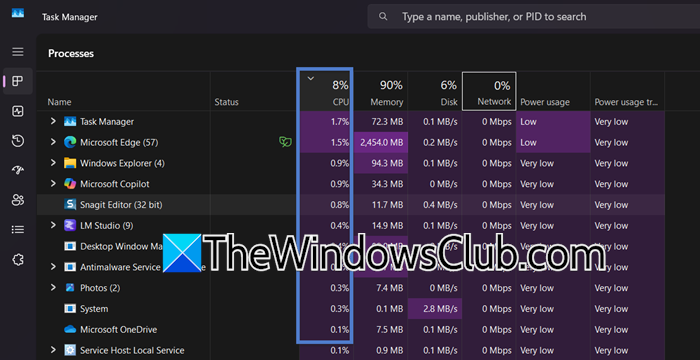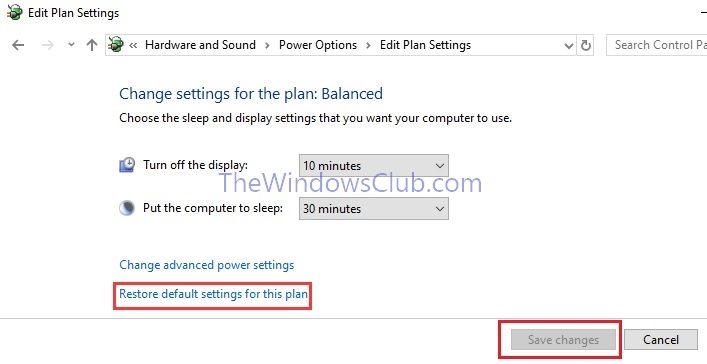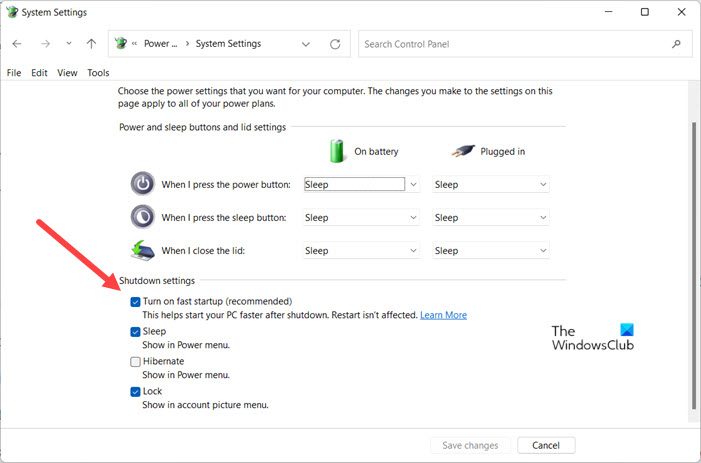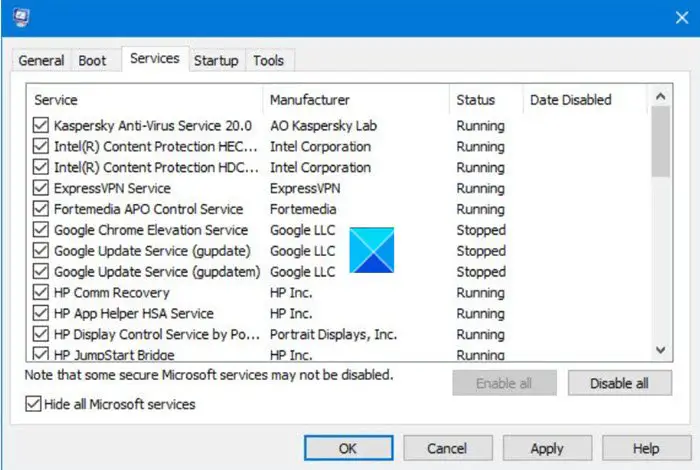If you have noticed that your computer automatically shuts down after detecting inactivity, it could be due to various reasons, including improper power settings, misconfiguration, overheating, and more. In this post, we are going to see what you can do if Windows 11/10 auto shuts down after inactivity when idle.

Fix Windows 11/10 Auto shutdown after inactivity when idle
If Windows 11/10 Auto shuts down after inactivity when idle, you can follow the solutions mentioned below.
- Check if your computer is overheating
- Check the Task Scheduler for a scheduled task
- Reset Power Options
- Update all your drivers
- Disable Fast Startup
- Troubleshoot in Clean Boot
Let us talk about them in detail.
1] Check if your computer is overheating

One of the most common reasons Windows decides to shut down the system is overheating. If, for some reason, your computer gets too warm, it will shut down without any message to protect its components from malfunctioning. If your system is overheating, and you are not sure why, open the Task Manager and see if any process is taking too much CPU. Kill that process once found.
Additionally, you can check if the thermal paste applied to your processor has dried up and reapply it if necessary. If you are unfamiliar with the hardware, you can visit a nearby computer shop to complete this. Hopefully, after rectifying this overheating issue, your system will not shut down after being idle for a few minutes.
Read: Free CPU Temperature Monitor and Checker software
2] Check the Task Scheduler for scheduled tasks
Task Scheduler in Windows is a utility that provides detailed information about your computer’s processes, applications, and system performance. It lets you monitor resource usage, start or end tasks, manage startup programs, and troubleshoot other issues.
If you have created a task that shuts down your computer due to inactivity. You need to open the Task Scheduler by searching for it in the Start Menu, then under Task Scheduler Library, look for the task that you would have set to shut down your system when idle. If you are a part of an organization, contact your IT admin and ask if they have configured such a task.
3] Reset Power Options

You may encounter this issue due to misconfigured Power Options settings. However, we can not point out what’s causing the issue, so we would reset the settings to their default value. To do so, you can follow the steps mentioned below.
- Open the Control Panel.
- Change the View by to Large icons.
- Click on Power Options.
- Now, click on Change plan settings and then on Restore default settings for this plan.
- Click on Yes when prompted.
- Finally, click on Save changes.
Finally, check if the issue is resolved. Alternatively, you can open the Command Prompt (admin) and then run the command: powercfg -restoredefaultschemes.
Once done, you need to check if the issue is resolved.
4] Update all your drivers
Drivers allow the operating system to communicate with hardware devices like printers, graphics cards, motherboards, GPU, and more. However, if for some reason they are outdated, you will start encountering issues such as the one in question. To resolve it, you need to update your drivers. Use one of the following methods to do the same.
- Get the latest version of the driver from the manufacturing website.
- Update your driver from Windows Drivers and Optional Updates.
Hopefully, after updating the drivers, you can resolve the issue.
5] Disable Fast Startup

Disabling Fast Startup prevents Windows from entering a hybrid shutdown state, which can sometimes lead to unexpected issues like auto shutdowns after inactivity. By turning it off, the system performs a full shutdown and boot, ensuring proper session handling and potentially resolving this behavior. To disable Fast startup, you can follow the steps mentioned below.
- Open Power Options by searching “Choose a power plan” from the Start Menu.
- In the left pane, click on Choose what the power buttons does.
- Turn off Turn on fast startup (recommended) checkbox.
Finally, check if the issue is resolved.
FIX: Computer Overheating and Noisy Laptop Fan issues
6] Troubleshoot in Clean Boot

If we are not able to figure out what is causing this issue, we can try performing a Clean Boot. It turns off all the third-party services, allowing Windows not have a clean slate. We can leave the system idle and see if it shuts down. If the system doesn’t shut down, we can enable these processes manually to stumble upon the culprit.
We hope this helps.
Read: Windows computer restarts after selecting Shutdown
How to set auto shutdown in Windows 11 when idle?
To set auto shutdown in Windows 11 when idle, use Task Scheduler. Press Win + S, type Task Scheduler, and open it. Click Create Basic Task, name it (e.g., “Auto Shutdown”). Now, choose Daily (or your preference), set a start time (it will check for idle later). Under Action, select Start a program, type shutdown in “Program/script,” and add /s /f in Arguments. Go to Conditions, check Start the task only if computer is idle for and set time (e.g., 30 minutes). Save. Now, Windows will shut down if idle for your chosen time.
Read: Windows 11 Shutdown box keeps popping up randomly.
How to stop PC from turning off after inactivity in Windows 11?
To stop your Windows 11 PC from turning off after inactivity, first check for overheating by monitoring CPU usage in Task Manager and ensure proper cooling. Also, go through the Task Scheduler to delete any auto-shutdown tasks. You can also reset power settings via Control Panel or Command Prompt (powercfg -restoredefaultschemes). Update drivers manually or via tools. For more details on the solutions, go through the mentioned solutions.
Also Read: System Idle Process high CPU usage in Windows.